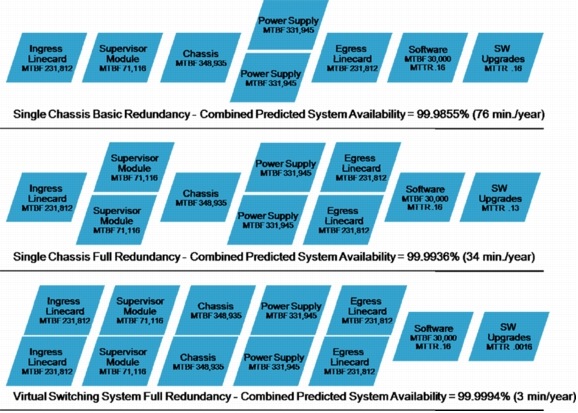- Cisco Community
- Technology and Support
- Networking
- Routing
- Why we Need 2 Core when Each Core has 2 Sups?
- Subscribe to RSS Feed
- Mark Topic as New
- Mark Topic as Read
- Float this Topic for Current User
- Bookmark
- Subscribe
- Mute
- Printer Friendly Page
Why we Need 2 Core when Each Core has 2 Sups?
- Mark as New
- Bookmark
- Subscribe
- Mute
- Subscribe to RSS Feed
- Permalink
- Report Inappropriate Content
04-14-2016 11:44 AM - edited 03-05-2019 03:48 AM
Hi,
Since Nexus/65xx Catalyst has Dual Sups in them, do we still need to buy 2 Separate Chasis?
What is justification of having 2 Chases with Dual Sups ?
cant Single Core with Dual Sups be enough has they have multiple PS as well.
Please give me some solid justification of buy 2nd Core switch :)
Any help will be appreciated.
- Labels:
-
Other Routing
- Mark as New
- Bookmark
- Subscribe
- Mute
- Subscribe to RSS Feed
- Permalink
- Report Inappropriate Content
04-16-2016 01:57 AM
Hi,
wouldn't you agree that two chassis, located in different fire compartements and with independent infrastructure in each compartement can increase the availability?
Intra-chassis redundancy (2 SEs in a single standalone chassis) is of course better than a single SE in terms of availability, but when you want to offer a high availability solution to your customers combined with the appropriate SLAs, this might not be enough (and the cost of such a SLA should justify the extra chassis on long term). A second chassis can also increase the system bandwidth (depending on the design).
From the Cat6500 Nonstop Forwarding with Stateful Switchover Whitepaper:

In most cases one SE per chassis will be enough when you have two chassis. An interesting design variant is VSS. From a control-plane perspective it works exactly like intra-chassis redundancy (active-standby control-plane) but the two SEs are located in two different chassis since they now can communicate using Ethernet instead of the backplane of a single chassis. But the data-plane, in contrast, works now in active-active mode which doubles the system bandwitdh in normal operation. The main advantage of combining intra-chassis and inter-chassis redundancy is that in the rare event of a single SE failure the switching capacity of the affected chassis (and consequently the total system) is fully maintained because you don't loose the linecards of that box.
HTH
Rolf
Discover and save your favorite ideas. Come back to expert answers, step-by-step guides, recent topics, and more.
New here? Get started with these tips. How to use Community New member guide